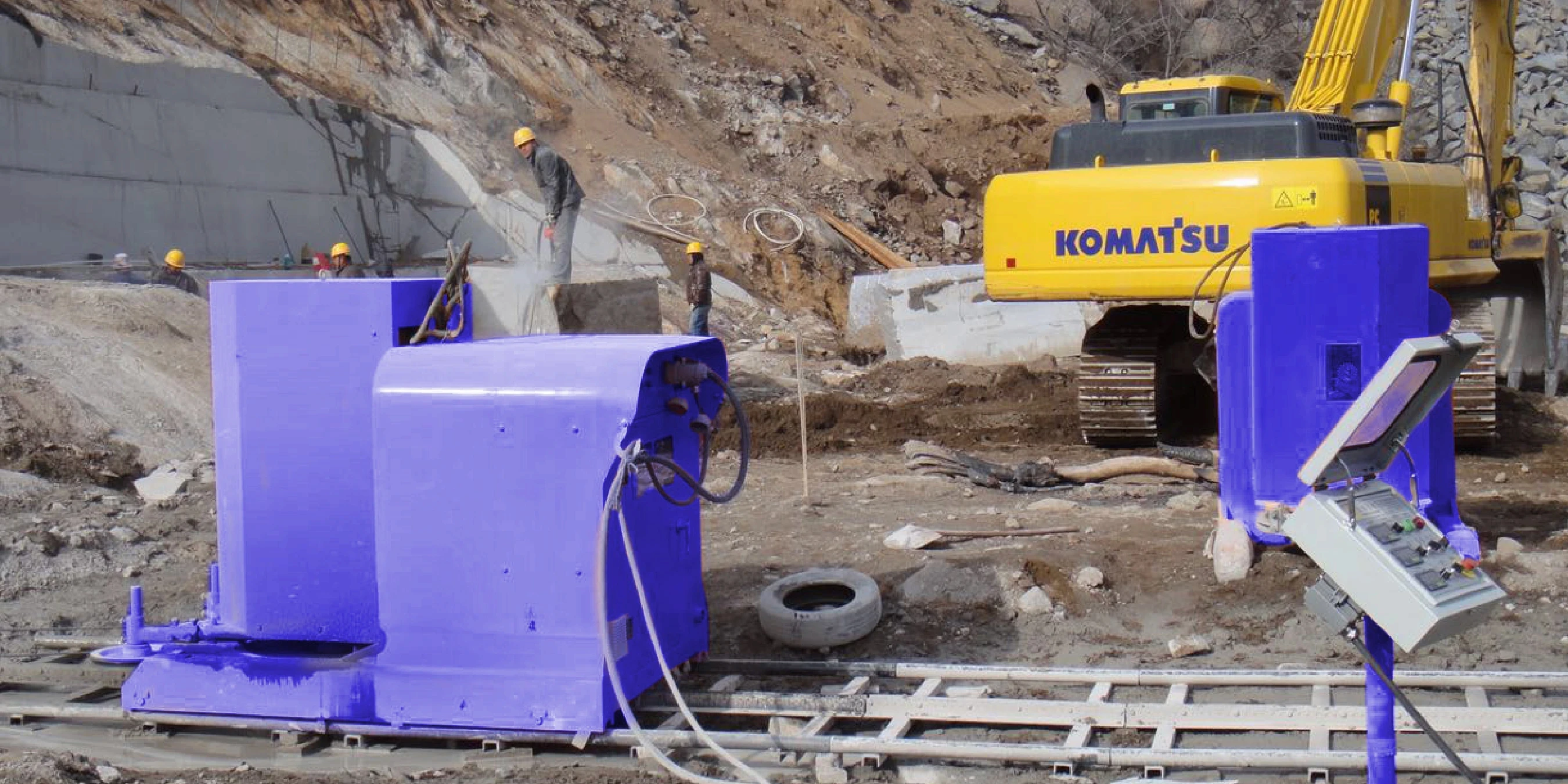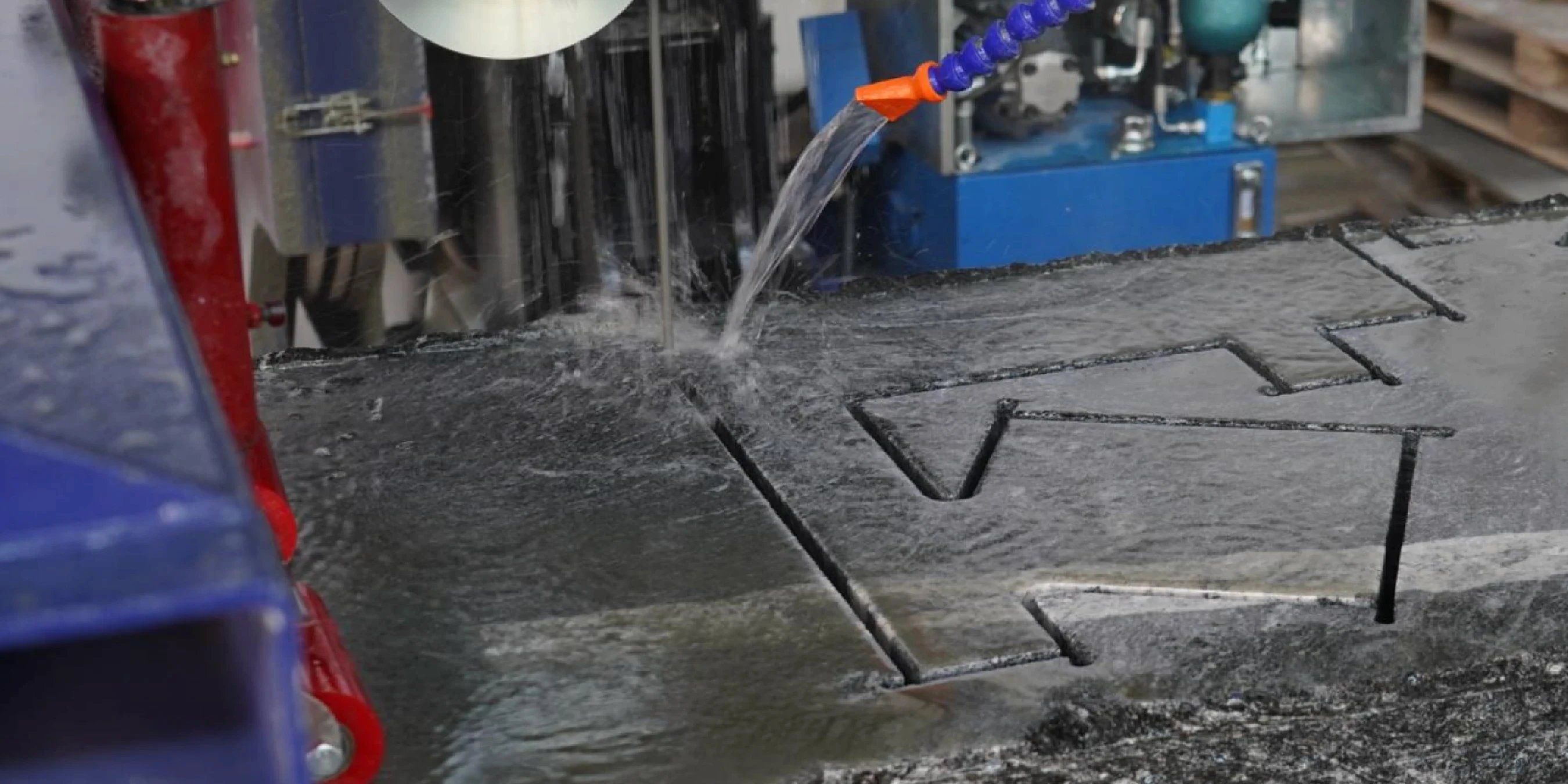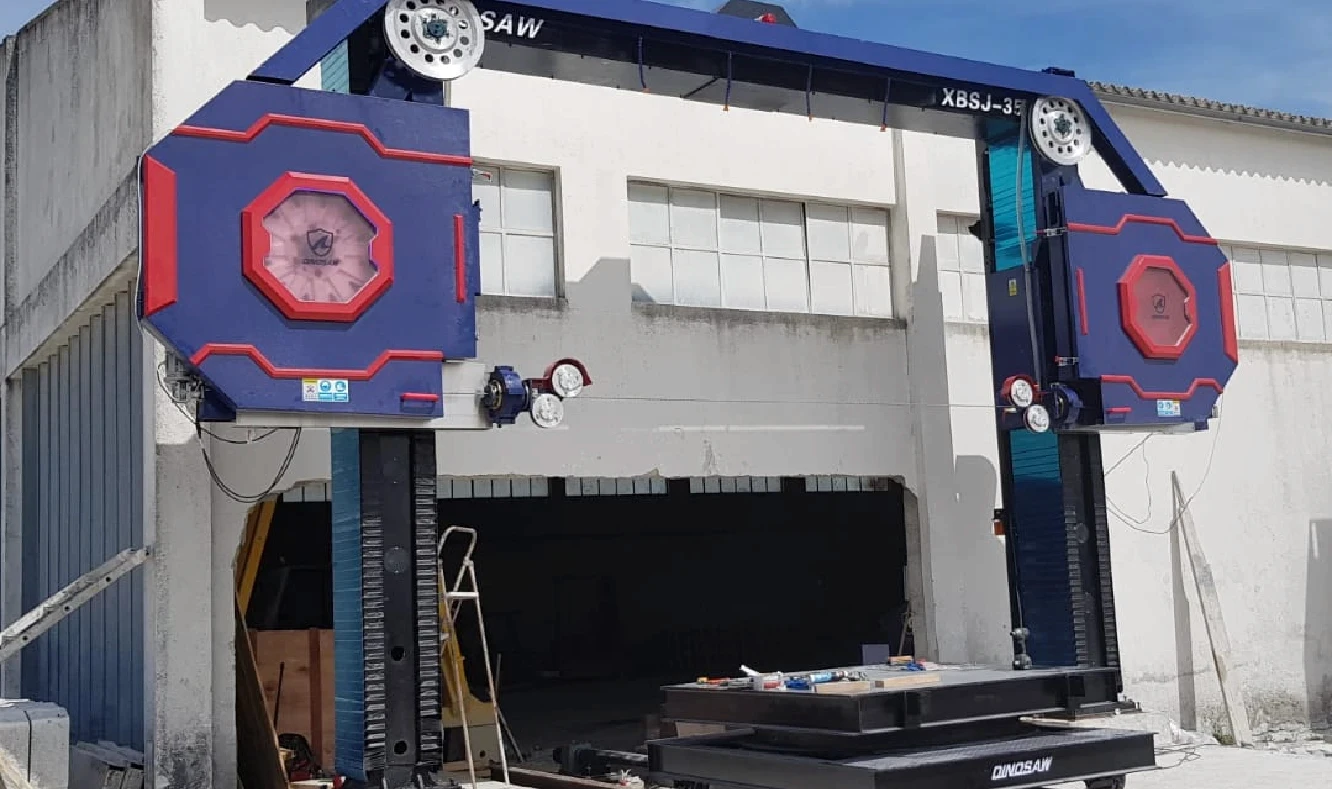Hi, this is Lizzy from Dinosaw ( Not a Robot ). Which Machine ( model ) do you want? Please WhatsApp us now
Explore 2025 CNC wire saw machine prices from $12k to $600k+. Our guide covers PLC, CNC, quarry, 5-axis, and multi-wire saws, key cost factors, and how to choose the best machine.
A practical buyer's guide that cuts through the marketing fluff to give you real pricing and honest advice from someone who's been in the stone fabrication business.
Let's Talk Numbers - What These Machines Really Cost
Here's the thing about wire saw pricing - everyone wants a simple answer, but there isn't one. I've watched too many shop owners get sticker shock because they expected all wire saws to cost the same. The reality? You're looking at anywhere from $12,000 for a basic workshop machine to north of $600,000 for those massive industrial beasts that slice entire quarry blocks like butter.
Before we dive into the numbers, let's get one thing straight. We're talking about diamond wire saws here - the workhorses of stone fabrication that handle granite, marble, and quartzite. Don't confuse these with Wire EDM machines (those are for metal cutting) or hot-wire foam cutters. Completely different animals.
Reality Check: The "advertised" price is rarely what you'll pay. Factor in shipping (these things are heavy), installation, training, and the inevitable "extras" that somehow weren't mentioned in the initial quote.

The Four Main Categories (And What You Get For Your Money)
After analyzing hundreds of quotes and installations, I've noticed the market naturally breaks into four distinct tiers. Each serves a different purpose, and understanding this will save you from either overpaying for features you don't need or buying something that can't handle your workload.
| Machine Type | Price Range (USD) | Best For | Key Features |
|---|---|---|---|
| PLC Wire Saw Machines | $12,000 - $80,000 | Profiling blocks, basic cutting | 2-3 axis, PLC control, single wire |
| Quarry Wire Saw Machines | $15,000 - $40,000 | Quarry operations | Track-mounted, high power motors |
| 5-Axis CNC Wire Saw Machines | $60,000 - $80,000 | Custom shapes, sculptures | Full CNC control, complex geometry |
| Thin Multi-Wire Machines | $160,000 - $600,000 | High-volume slabbing | 10-80+ parallel wires, industrial scale |
PLC Wire Saw Machines
These are the bread and butter machines for most stone shops. Think of them as the pickup trucks of the wire saw world - not fancy, but they get the job done day after day. Most run on PLC (Programmable Logic Controller) systems, which sounds complicated but really just means "simple and reliable."
What they're good at: squaring blocks, trimming edges, basic profiling. What they're not: creating complex 3D sculptures or handling massive production volumes. The sweet spot for pricing seems to be around $25,000-45,000 for a decent quality machine that won't drive you crazy with downtime.
Quarry Wire Saw Machines
Now we're talking about machines built like tanks. These need to survive in quarries where dust, vibration, and general abuse are part of daily life. They're usually track-mounted and pack serious motor power - we're talking 30kW to 75kW, enough to make your electrical bill jump.
Here's what's interesting: the price overlap with workshop machines is deceptive. A $25,000 quarry saw and a $25,000 workshop saw are completely different animals. The quarry machine sacrifices precision for durability and power.
5-Axis CNC Wire Saw Machines
This is where things get exciting. 5-axis capability means the wire can move and tilt in every direction, letting you create shapes that would be impossible with traditional methods. Roman columns, complex sculptures, architectural details with undercuts - if you can design it, these machines can probably cut it.
The price jump to $60,000+ reflects the complexity involved. You're not just buying motors and rails; you're buying sophisticated software, precision control systems, and the engineering expertise to make it all work together smoothly.
Thin Multi-Wire Machines
These are the machines that make stone fabrication profitable at scale. Instead of one wire slowly working through a block, you get 10, 20, 40, or even 80+ wires working in parallel. It's like watching a block turn into a stack of slabs in fast motion. The productivity gains are enormous, but so is the investment.

The Seven Things That Actually Drive Price
After reviewing countless quotes and talking to both buyers and sellers, I've identified the real factors that separate a $15,000 machine from a $600,000 one. Some are obvious, others might surprise you.
1. Complexity of Movement (The Axis Count)
More axes of movement = more complexity = higher price. A 5-axis machine needs more sophisticated control software, more precise mechanical components, and more engineering expertise to design. The jump from 3-axis to 5-axis can easily double your cost, but for custom work, it's often the only way to achieve certain cuts.
2. Build Quality (Where You Really Get What You Pay For)
I've seen too many shops learn this lesson the hard way. A machine with a lightweight frame might save money upfront, but it'll cost you in vibration, reduced accuracy, and premature wear. Look for stress-relieved steel construction, quality linear guides, and precision servo motors from reputable brands.
The difference between a quality servo motor and a cheap stepper motor might be $2,000 in component cost, but it translates to smoother operation, better precision, and fewer headaches down the road.
3. Brand and Country of Origin (The Reputation Premium)
Italian brands like Breton and Pellegrini command premium prices, and honestly, they often deliver premium performance. But here's where it gets interesting - there's a new generation of Chinese manufacturers that are challenging the old assumptions about quality vs. price.
Companies like Dinosaw Machine are using high-quality international components (like Italian ESA control systems) while leveraging efficient manufacturing to offer competitive pricing. They're proving you don't always need to pay the full premium for good performance.
4. The Control System (The Brain of the Operation)
This is where you really see the difference between budget and premium machines. High-end controllers from companies like ESA or Siemens provide smoother motion control, more user-friendly interfaces, and better reliability. A quality control system can add $10,000-20,000 to the machine cost, but it's usually worth it.
I've seen shops struggle with cheap controllers that require G-code programming knowledge. Modern systems should be intuitive enough that your operators don't need a computer science degree.
5. Size and Capacity (Physics Can't Be Cheated)
Bigger machines cost more. Period. A machine designed to handle 20-ton blocks needs a completely different level of structural engineering than one for countertop-sized pieces. The materials, manufacturing complexity, and shipping costs all scale with size.
6. Automation Features (The Labor Savers)
Automatic wire tensioning, integrated cameras for cut positioning, robotic loading systems - these features can significantly increase productivity but also add substantial cost. The question is whether the labor savings justify the investment.
7. Support and Training (The Hidden Value)
A comprehensive warranty, proper installation, and thorough training can add significant value to a machine purchase. I've seen shops buy "cheap" machines that ended up costing more due to poor support and inadequate training. Sometimes paying more for a complete package is the smarter financial decision.

The Total Cost Reality Check
Here's what the sales brochures don't tell you: the purchase price is just the beginning. Over the machine's lifetime, you'll spend significantly more on consumables, maintenance, and operating costs than you did on the initial purchase.
The Upfront "Extras" You Didn't Budget For
- Shipping and Installation: These machines are heavy and complex. Budget at least $5,000-15,000 for proper logistics and professional installation. I've seen DIY installations go very wrong.
- Site Preparation: Your existing shop floor might not be adequate. Reinforced concrete foundations, electrical upgrades, and proper water systems can add $10,000-30,000 to your project.
- Software and Training: CAD/CAM software licenses and comprehensive operator training can easily add another $5,000-15,000. But skipping this is penny-wise and pound-foolish.
The Ongoing Costs That Really Add Up
- Diamond Wire: This is your biggest ongoing expense. Quality wire runs $15-50+ per meter, and a full loop can cost $500-2,000 depending on your machine size. A busy shop might go through several loops per month.
- Maintenance: Budget around $200-500 per month for routine maintenance. Emergency repairs can be much more expensive, especially if you don't have a local service network.
- Labor Efficiency: A well-designed machine with intuitive controls can reduce your labor costs significantly. Machines that require specialized skills or constant attention can become labor cost drains.
How to Actually Choose the Right Machine
I've watched too many shops make expensive mistakes by either buying too much machine or too little. Here's a practical approach that actually works:
Step 1: Be Brutally Honest About Your Needs
What are you actually going to cut? Simple countertops? Complex architectural pieces? High-volume slabs? The answer determines which category of machine you need. Don't buy a 5-axis machine if you're only doing basic profiling - you're paying for capability you'll never use.
Step 2: Know Your Materials
Cutting quartzite all day requires a more robust machine than occasionally trimming marble. Hard, abrasive materials demand higher motor power, better cooling, and more rigid construction. Match your machine's capabilities to your material requirements, not your wishful thinking.
Step 3: Demand a Real Demo
Specifications on paper mean nothing. Any serious manufacturer should be able to demonstrate their machine cutting your actual materials. Bring your own stone and cutting files if possible. Pay attention to cut quality, speed, and how easy the machine is to operate.
Step 4: Read the Fine Print
What exactly is included in that quoted price? Shipping? Installation? Training? Software? A "cheap" quote that excludes essentials can end up being more expensive than a comprehensive package deal. Always compare total installed costs, not just machine prices.

The Bottom Line: Making a Smart Investment
After analyzing this market for years, here's my honest assessment: there's no such thing as a "cheap" wire saw that's worth buying. But there are definitely machines that offer better value than others.
The sweet spot for most shops seems to be in the $25,000-50,000 range for a quality machine that balances capability with cost. Below $20,000, you're usually making significant compromises in build quality or features. Above $60,000, you're paying for specialized capabilities that many shops don't actually need.
The key is thinking beyond the initial purchase price. A well-built machine from a reputable manufacturer with good support can pay for itself through increased productivity, reduced downtime, and lower operating costs. A cheap machine that breaks down regularly is expensive at any price.
Frequently Asked Questions
Q: What does diamond wire actually cost to replace?
Plan on $15-50+ per meter depending on quality and diameter. A complete loop for a standard machine runs $500-2,000. Higher-quality wire typically lasts longer, so the cost per cut can actually be lower despite the higher upfront cost.
Q: How much should I budget for maintenance?
For routine maintenance, budget about $200-400 per month for a standard production machine. Emergency repairs are harder to predict but having a local service network can make a huge difference in both cost and downtime.
Q: Is a 5-axis machine worth the extra money?
Only if you're doing complex 3D work with significant value-add. For basic slabbing or simple profiling, you're paying for capability you'll never use. But for custom architectural work or artistic pieces, it can be essential for commanding premium prices.
Q: Why are Italian machines so much more expensive than Chinese ones?
Italian brands like Breton have decades of reputation and refinement, which commands a premium. However, the gap is narrowing as quality-focused Chinese manufacturers like Dinosaw are using international components and modern manufacturing to offer comparable performance at better prices.
Q: Can these machines cut materials other than stone?
Yes, with the right wire and parameters, they can handle reinforced concrete, ceramics, and even glass. However, each material has specific requirements, so make sure your machine and wire choice are appropriate for your applications.
Ready to Move Forward?
The right wire saw isn't just an equipment purchase - it's a strategic investment in your business's future productivity and capabilities. Take the time to evaluate your real needs, understand the total cost of ownership, and choose a machine that will serve your business for years to come.
For personalized guidance based on your specific situation, consider reaching out to experienced manufacturers who can provide demonstrations and detailed cost analysis for your particular applications.























 English
English 中文
中文 Italian
Italian Türkçe
Türkçe Português
Português

